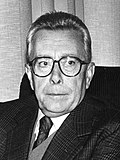| |||||||||||||||||||||||||||||||||||||||||||||||||||||||||||||||||||||||||||||||||||||||||||||
All 630 seats in the Chamber of Deputies · 315 seats in the Senate | |||||||||||||||||||||||||||||||||||||||||||||||||||||||||||||||||||||||||||||||||||||||||||||
|---|---|---|---|---|---|---|---|---|---|---|---|---|---|---|---|---|---|---|---|---|---|---|---|---|---|---|---|---|---|---|---|---|---|---|---|---|---|---|---|---|---|---|---|---|---|---|---|---|---|---|---|---|---|---|---|---|---|---|---|---|---|---|---|---|---|---|---|---|---|---|---|---|---|---|---|---|---|---|---|---|---|---|---|---|---|---|---|---|---|---|---|---|---|
| Registered | 47,486,964 (C) · 41,053,543 (S) | ||||||||||||||||||||||||||||||||||||||||||||||||||||||||||||||||||||||||||||||||||||||||||||
| Turnout | 41,479,764 (C) · 87.4% ( 35,633,367 (S) · 86.8% ( | ||||||||||||||||||||||||||||||||||||||||||||||||||||||||||||||||||||||||||||||||||||||||||||
| |||||||||||||||||||||||||||||||||||||||||||||||||||||||||||||||||||||||||||||||||||||||||||||
| |||||||||||||||||||||||||||||||||||||||||||||||||||||||||||||||||||||||||||||||||||||||||||||
The 1992 Italian general election was held on 5 and 6 April 1992.[1] They were the first without the traditionally second most important political force in Italian politics, the Italian Communist Party (PCI), which had been disbanded in 1991. Most of its members split between the more democratic socialist-oriented Democratic Party of the Left (PDS), while a minority who did not want to renounce the communist tradition became the Communist Refoundation Party (PRC); between them, they gained around 4% less than what the already declining PCI had obtained in the 1987 Italian general election, despite PRC absorbing the disbanded Proletarian Democracy (DP).
The other major feature was the sudden rise of the Northern League (LN), a federalist party that increased its vote from 0.5% of the preceding elections to more than 8%, increasing from a single member both in the Chamber and the Senate to 55 and 25, respectively. The "long wave" (onda lunga) of Bettino Craxi's now centrist-oriented Italian Socialist Party (PSI), which in the past elections had been forecast next to overcome PCI, seemed to stop. Christian Democracy (DC) and the other traditional government parties, with the exception of the Italian Republican Party (PRI) and the Italian Liberal Party (PLI), also experienced a slight decrease in their vote.
Cite error: There are <ref group=lower-alpha> tags or {{efn}} templates on this page, but the references will not show without a {{reflist|group=lower-alpha}} template or {{notelist}} template (see the help page).
- ^ Dieter Nohlen & Philip Stöver (2010) Elections in Europe: A data handbook, p1048 ISBN 978-3-8329-5609-7







